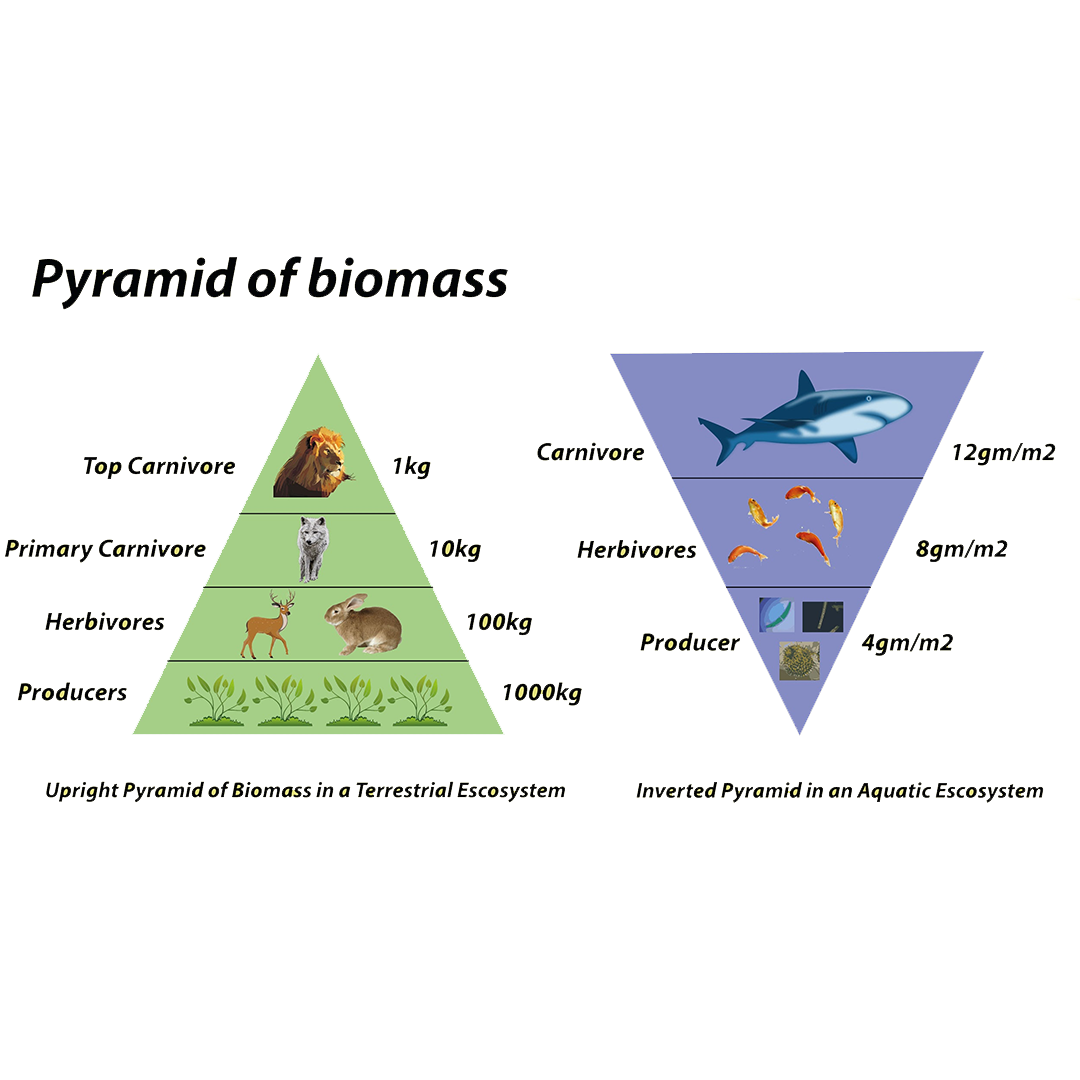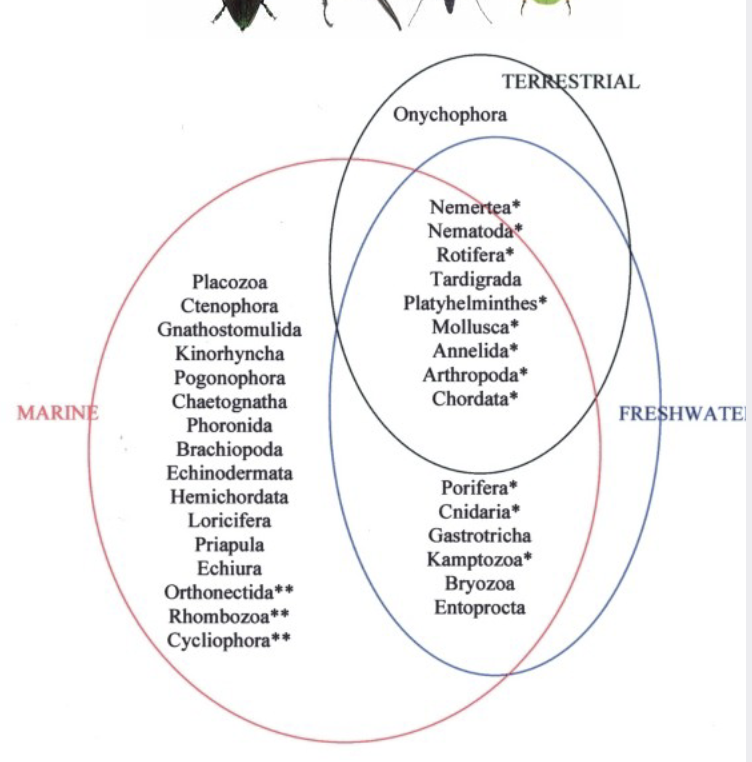Aquatic Ecology - Content Study Guide
1/15
There's no tags or description
Looks like no tags are added yet.
Name | Mastery | Learn | Test | Matching | Spaced |
|---|
No study sessions yet.
16 Terms
How are terrestrial and aquatic ecosystems different in terms of primary producers?
Primary production
aquatic ecosystems: microscopic phytoplankton (their size allows for floatation and drift. Rooted plants only have a minor role in nutrient production.
terrestrial ecosystems: large visible forms like grasses and trees that are rooted firmly in substrate
How are terrestrial and aquatic ecosystems different in terms of structural support?
Aquatic Ecosystems: density of water provides structural support for aquatic organisms
Terrestrial Ecosystems: plants require roots for anchoring and trunks for support
meaning they need production of carbohydrates like cellulose and lignin to promote the strength and rigidity (aquatic plants do not need this)
Terrestrial animals also need to invest more in skeletal support
How do terrestrial and aquatic ecosystems differ in nutritional content?
Aquatic ecosystems: phytoplankton are primary composed of protein
Little of this production enters the decomposer cycle
Terrestrial/transitional: primary production is in the form of inedible/indigestible components (cellulose and lignin contained in bark, trunks, roots). *Only 5-15% is eaten by herbivores
most of the indigestible material enters the food chain via the decomposition cycle.
How do terrestrial and aquatic ecosystems differ in their autotroph-heterotroph ratio?
Aquatic ecosystems: phytoplankton are very small and have high protein content —> they are very efficient producers
Because phytoplankton are so small, the aquatic ecosystem food pyramid is flipped
In terrestrial ecosystems the numbers, biomass and energy levels are always higher for autotrophs and heterotrophs (more plants than animals!)

How do terrestrial and aquatic ecosystems differ in their productivity?
Primary production (Kcal of energy captured per square meter) in aquatic ecosystems is lower than on terrestrial ecosystems
Transitional areas (including marshes) are as productive if not more productive than terrestrial ecosystems
How do terrestrial and aquatic ecosystems differ in their production to biomass ratio?
Aquatic ecosystems: phytoplankton has low biomass but they are extremely fast growing
high production to biomass ratio
Terrestrial ecosystems: have high biomass but are slow growing and long lived.
lots of the primary production is used to maintain respiration and nutrition of that biomass
Terrestrial gestation has lower production to biomass ratio
How do terrestrial and aquatic ecosystems differ in their production efficiency and energy requirements?
Aquatic: most animals are cold blooded with lower energy requirements, are buoyant and use little energy in locomotion instead the energy is put toward growth and reproduction
production efficiency is 10x higher in aquatic cold blooded animals, this means that aquatic systems have a higher secondary production compared to terrestrial systems
Terrestrial: most animals are warm blooded,
How do aquatic and terrestrial systems differ in their dominant species?
Aquatic ecosystems: dominated by animals
Terrestrial ecosystems: dominated by plants
Ex. Ocean contributes only 35% of the world plant production, but it accounts for nearly 80% of animal production
How do aquatic and terrestrial ecosystems differ in their changes to physical/chemical environment?
water is more constant that air, terrestrial ecosystems change significantly throughout the year and day
Ex. Long Island can fluctuate 80C in a day, where as marine temps may only fluctuate 27C
How to aquatic and terrestrial ecosystems differ in their nutritional sources?
Terrestrial: organic food is located in living organisms
terrestrial plants absorb nutrients through their roots, but terrestrial animals cannot absorb nutrients directly from the air/soil
Aquatic: every gram of living organisms is 10 grams of dead organic matter and 100 grams of dissolve organic matter
most plants and animals absorb nutrients directly from the water
Phytoplankton have high surface to volume ratio which promotes uptake of nutrients directly through the cell wall
How do aquatic vs terrestrial systems differ in animal/protozoan biodiversity?
of the 37 animal phyla, 36 are mostly aquatic or marine
nearly 90% of terrestrial fauna is insects (which are absent from marine waters)
